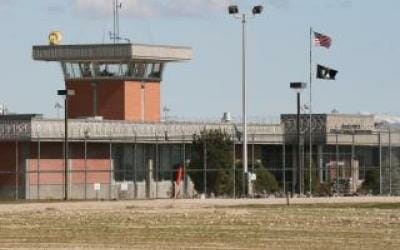
Criminal Justice in Idaho
In the U.S., no two states run the same criminal justice system the same way. With its low population and no federal prisons, a state like Idaho is responsible for virtually all the criminal justice institutions within its borders. This article outlines key data and statistical information about Idaho crime, Idaho’s prison population, recidivism, criminal justice programs, and alternatives.
Idaho Prison Population Data
Two of the first questions to answer in assessing the criminal justice system in Idaho include: how many people are incarcerated? And: what are the biggest prisons in Idaho? Despite its comparatively low population (1.754 million), Idaho has the ninth-highest incarceration rate in the nation, behind Georgia but ahead of Florida.1
According to the National Institute of Corrections, Idaho has 36 jails in 44 counties.2 Its jail population in 2019 was 5,610. Idaho also manages ten state prisons, which hold 9,437 inmates. The state has a prison staff of 1,960 employees and a budget of $267,340,209. Estimates suggest Idaho’s corrections department is the state’s seventh costliest budget item.3

Idaho also has 35,516 people under its probation system and 5,122 people under parole, meaning a significant percentage of the state’s population has interacted with the criminal justice system.
Idaho has one private prison, the Idaho Correctional Alternative Placement Program, run by the Management and Training Corporation. The South Boise Prison Complex, a network of seven clustered prisons in the same geographic area, is Idaho’s largest prison complex. The largest facility within the complex is the Idaho State Correctional Institution, with a capacity of 1,446.4,5
The State of Idaho incarcerates people at a rate of 475 persons per 100,000 population. Meanwhile, the state only has a violent crime rate of 224 per 100,000, suggesting a little more than half the people in jail or prison in Idaho are being held either awaiting trial or serving time for nonviolent crimes. Idaho’s tendency to incarcerate offenders in its state prisons for nonviolent crimes may be one of the reasons why Idaho has a higher-than-average incarceration rate.
Crime and Recidivism Rates in Idaho
The Bureau of Justice Assistance provides state-by-state data on crimes committed in each state. According to their profile on Idaho, the state experiences about 3,500 violent crimes per year, the vast majority of which (about 2,500) are aggravated assaults. The state reports about two to three dozen murders per year, 500–1,000 rapes per year, and 200–300 robberies per year. Idaho also reports about 30,000 property crimes per year.6
Statistical data on recidivism is measured and analyzed at federal and state levels. According to federal analysis, Idaho has a recidivism rate of 35%, meaning the state’s criminal justice system is not working for at least one-third of the people who go through it. On a state level, Idaho’s own Statistical Analysis Center reported that the state’s recidivism rate is likely closer to 40%.7
Criminal Rehabilitation in Idaho
Criminal reform in Idaho is an important goal for the state’s justice system and its prison branch. According to the same resource cited above that provided state-level information on recidivism:
- One in 148 Idahoans is in prison.
- One in 25 Idahoans is imprisoned, jailed, on parole, or under probation.
- Except for Arizona, Idaho has the highest incarceration rate in the American West.
- One in 48 Idahoans have interacted with the prison system and are now under supervision for a felony conviction.
According to the Idaho Department of Correction, the rising prison population and the concerningly high percentage of Idaho residents who’ve had some interaction with the criminal justice system have caused the state to move towards diversifying its criminal rehabilitation. For example, some of the criminal rehabilitation programs in Idaho center around:8
- Mental health
- Substance abuse
- Cognitive/behavioral
- Sex offender programming
- Education and vocational programs
To keep drug-related offenders out of prison, Idaho also manages 31 felony drug courts, two juvenile mental health courts, four juvenile drug courts, and 11 adult mental health courts. Idaho should expand these drug court programs and the above programs to reduce its incarceration rate.9
Alternatives to Incarceration in Idaho
Alternatives to prison can be beneficial in every state, Idaho included. In too many ways, the criminal justice system in Idaho has become overburdened with cases involving offenders who might not even belong in jail, like nonviolent offenders whose only crime is being caught with a small amount of cannabis or another drug on their person. Given that more than half of Idaho offenders are locked up for nonviolent crimes, Idaho would benefit from alternatives to incarceration that still address the root causes of wrongdoing but do not expose such a high percentage of Idaho’s population to the criminal justice system.
Finally, educational programs inside prisons in Idaho and evidence-based rehabilitation programs inside prisons in Idaho could make a significant difference for prisoners, reducing recidivism and giving offenders new life skills. Such programs would significantly improve the lives of the incarcerated, both for the remainder of their sentences and for their lives outside prison.
Sources:
- BJS. “Prisoners in 2020 – Statistical Tables.” Bureau of Justice Statistics, 2021. bjs.ojp.gov
- NIC. “Idaho 2019.” National Institute of Corrections, 2019. nicic.gov
- Urban. “Project Idaho.” Urban Institute, 2022. urban.org
- IDC. “Prison Locations.” Idaho Department of Corrections, 2022. idoc.idaho.gov
- IDC. “Idaho State Correctional Institution.” Idaho Department of Corrections, 2022. idoc.idaho.gov
- BJA. “State Criminal Justice Profile: Idaho.” Bureau of Justice Assistance, 2014. bjafactsheets.iir.com
- IDAC. “Recidivism Rates Among the Idaho Department of Correction’s Supervised Population.” Idaho Statistical Analysis Center, 2021. isp.idaho.gov
- IDC. “Treatment.” Idaho Department of Corrections, 2022. idoc.idaho.gov
- JB. “Reports and Data.” State of Idaho Judicial Branch: Treatment Courts, 2022. isc.idaho.gov
Related Articles
Learning How to Bring Out the Best in a Child
Successful Parenting Course In completing the Successful Parenting course I learned how to bring out the best in a child. I believe I can raise...
Read more >>


